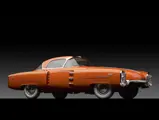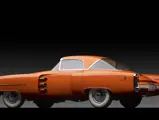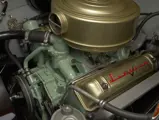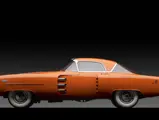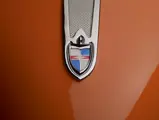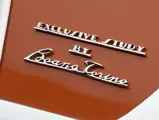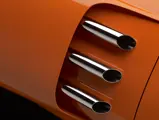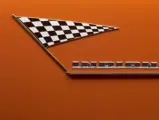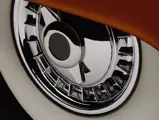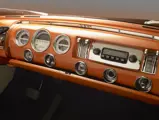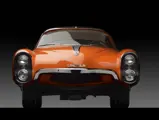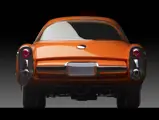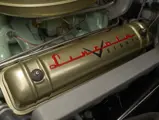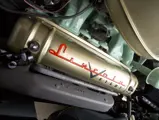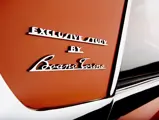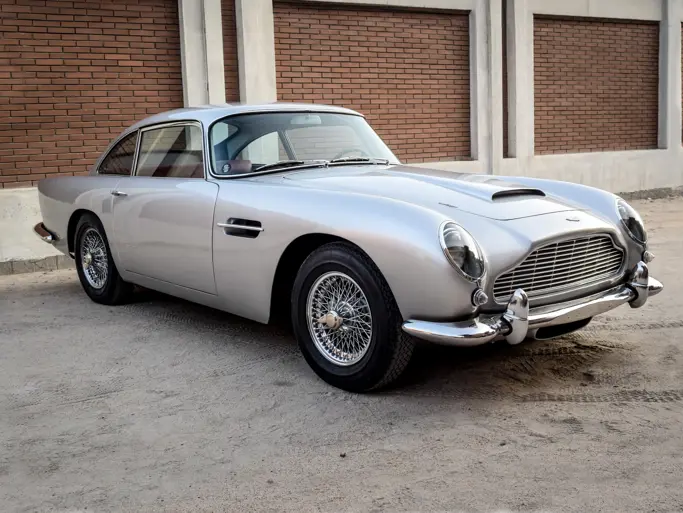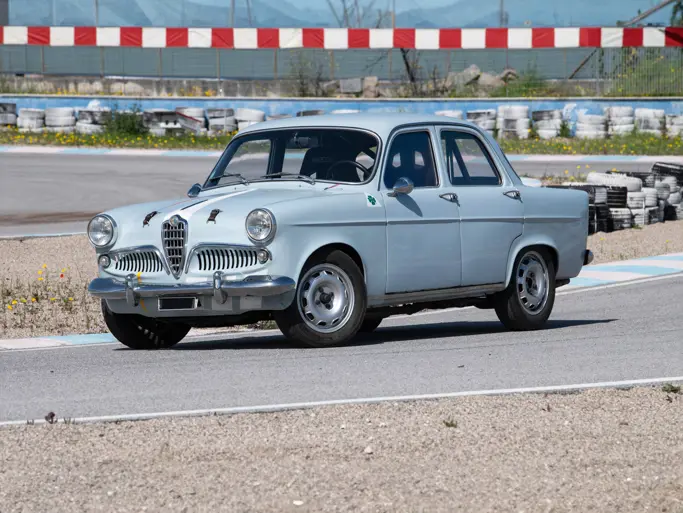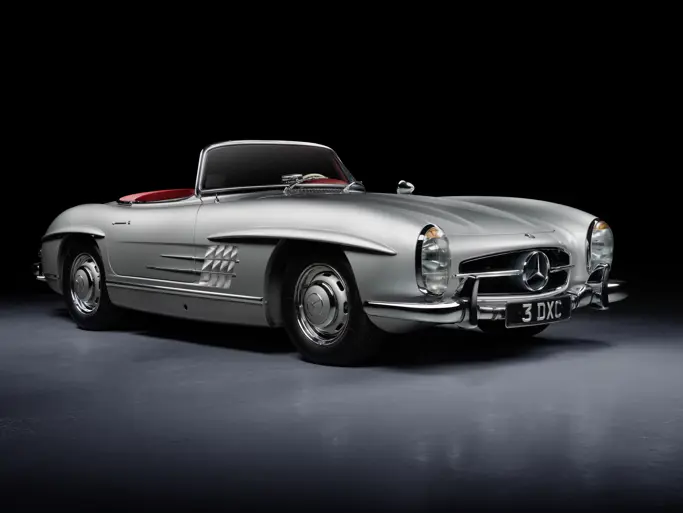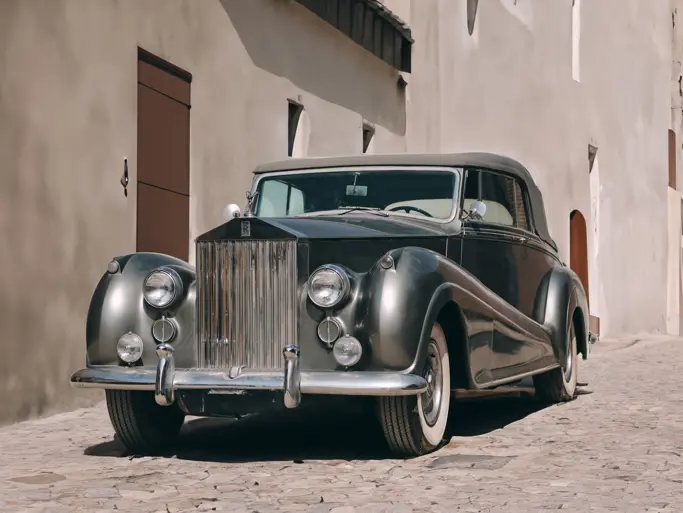New York - Art of the Automobile 2013
1955 Lincoln Indianapolis Exclusive Study by Carrozzeria Boano Torino
{{lr.item.text}}
$2,000,000 - $2,500,000 USD | Not Sold
 | New York, New York
| New York, New York
{{internetCurrentBid}}
{{internetTimeLeft}}

- One of the most important surviving concept designs of the 1950s
- The 1955 Turin Automobile Salon show car
- Exquisite, Pebble Beach award-winning restoration
Automotive design, once separated into two schools by the Atlantic Ocean, became a virtually universal language in the 1950s. There was much cross-pollination between continents, as American designers began to travel overseas and European designers turned to the American car companies to provide chassis for their creations. In the early post-war years, the United States was rich with prosperity and vigor, and, combined with continental brio, this resulted in many incredible creations that captured the aura of an age.
Gian Paolo Boano’s styling also captured the spirit of the man. In 1955, Boano was in his early 20s, but he had already been designing cars alongside his father, Felice Mario Boano, for several years, first at Ghia and then later at their own Carrozzeria Boano Turin. Young Boano lived like most 20-somethings all over the world: he enjoyed a good party and a bevy of beautiful women. As he later told preeminent American automotive historian Beverly Rae Kimes, “I always lived with enthusiasm. I was able to fulfill all of my desires.”
That attitude displayed itself in Gian Paolo Boano’s designs, particularly in a certain spaceship presented at the 37th Salone dell’Automobile in Turin in 1955. It had curves in abundance; so many that the eye does not so much settle on the car as move swiftly over it, watching the lines form themselves. It looked like nothing else yet built in the world, which was probably the idea. It was dubbed the Indianapolis, and it would be the hottest of “hot rod Lincolns.”
A friend of the young Boano, Cuccio, had worked with Ford Motor Company and suggested that Carrozzeria Boano Torino produce a car on a Lincoln chassis for Turin. The Boanos were not unaccustomed to working with clients overseas. Ghia, for which both father and son had previously worked, enjoyed great success building one-off show cars for Chrysler. The Boanos hoped to work with Ford in a similar arrangement.
The pedestal on which the sculpture would be built was a stock 1955 Lincoln, which meant that it had a central-beamed chassis that carried a 255-horsepower V-8 engine, from which a sheet metal body was built around.
Gian Paolo Boano’s Futurist design was based upon the idea of an aircraft, with a rounded center section that tapered at each end between pontoon-like outer wings; non-functional exhaust and cooling intakes; and a glassy canopy that recalled streamlined Le Mans racing cars of the 1930s. A traditional grille was removed and replaced by an air opening under the front bumper, which was the largest piece of chrome on the car. Four headlamps stood upright in chromed oval surrounds, while the taillights settled in nearly identical nacelles above jutting chromed exhaust tips. The tail end recalled a jet’s afterburner—a favorite design element of 1950s car designers.
The interior was designed for two, emphasizing the devil-may-care nature of putting a cozy couple in such a vast car, as well as the aircraft inspiration of the design. It was wrapped in fine leather, with a “stepped” console that divided the bucket seats with their black-and-white two-tone pattern. Driver and passenger faced a fascia that seemed to sweep around the entire interior of the car, with a black insert framed by panels of orange, bearing, in proud block letters, “INDIANAPOLIS.” Only when necessary was the center panel opened, revealing a complete bank of instruments.
Young Boano emphasized the car’s curvaceousness by using very little brightwork or unnecessary trim; the most prominent badges on the car were “LINCOLN” and “EXCLUSIVE STUDY BY BOANO TORINO,” which said everything that the coachbuilder wanted to say. Otherwise, the Indianapolis was pure rolling curves, as the design was broken only by the faux exhaust, vents, and a strip of bright chrome across the hood. Even today, it remains virtually impossible to focus on any singular detail of the Indianapolis’s design; the critic’s eye catches a line and is drawn to follow it across the car. It is an engrossing automobile.
When shown at Turin, the Indianapolis achieved the recognition that Boano had sought, including a cover feature in the November 1955 issue of Auto Age magazine, asking “Is this the next Lincoln?” Following the close of the Turin show, the Indianapolis was purchased by Ford, reportedly at the behest of Henry Ford II, and it was shipped to the United States. Gian Paolo Boano later recalled that Carrozzeria Boano Torino was offered a 10-year exclusive contract to design for Ford, but they instead chose to establish a styling center for Fiat instead.
In 2001, the late, revered automotive historian Beverly Rae Kimes wrote the Indianapolis’s definitive biography for Automobile Quarterly, Volume 41, Number 3. In researching the car, Kimes attempted to lend weight to longstanding claims that Henry Ford II had given the Indianapolis to legendary actor Errol Flynn, but only circumstantial proof was found.
The Indianapolis was reportedly later shown in Boston, where it sustained damage to the interior and was later acquired by Felix Duclos, of Manchester. Its history thereafter is well known and continues most prominently with Thomas Kerr, the renowned Packard collector and active Classic Car Club of America member.
Kerr remains the Indianapolis’s longest-term owner, and he was the man responsible for its rebirth. He owned it for three decades, and, during his ownership, he recognized its importance as a one-off piece of design history. Jim Cox Sr. and his son, Jim Jr., of Pennsylvania, took on the challenge of restoration.
The Coxes spent two years restoring the car to an extraordinary, show-quality finish. Glass-like paintwork was applied in the nuclear shade of orange that the Indianapolis had last worn in its show career. The instruments and power steering, which were originally nonfunctional, were built to working order. A powerful overhead-valve V-8 engine, displacing 341-cubic inches and producing over 200 horsepower, sits under the hood, and it is mated to a four-speed automatic transmission and four-wheel drum brakes.
With the restoration finally completed, the Indianapolis began a return to the show circuit after nearly 50 years. Forgotten by many, it astonished in its debut at the Pebble Beach Concours d’Elegance in 2001, where it completed the Tour d’Elegance and won top honors in the Postwar Custom Coachwork Class. It continued to garner awards at the Amelia Island Concours, the Burn Prevention Foundation Concours, and the Bethlehem Concours, as well as receiving the Most Outstanding Lincoln Award at Greenwich in 2003.
After Kerr sold the Indianapolis, it continued to tour East Coast concours. In its present ownership, it made a grand reappearance at the Pebble Beach Concours, again completing the tour and this time winning the Lincoln Trophy. That was a high honor in a year in which the Lincoln was a featured marque, with the finest examples of all eras lining the coast of Monterey.
The Indianapolis is presented today fresh from that victory, accompanied by a collection of documentation that includes copies of photos of it at Turin, programs and photographs from its modern show appearances, and copies of the Auto Age and Automobile Quarterly issues in which it was prominently featured. It remains a breathtaking, concours-ready piece of automotive sculpture, from an era of futuristic design that spanned continents and made history both in Detroit and Turin.

